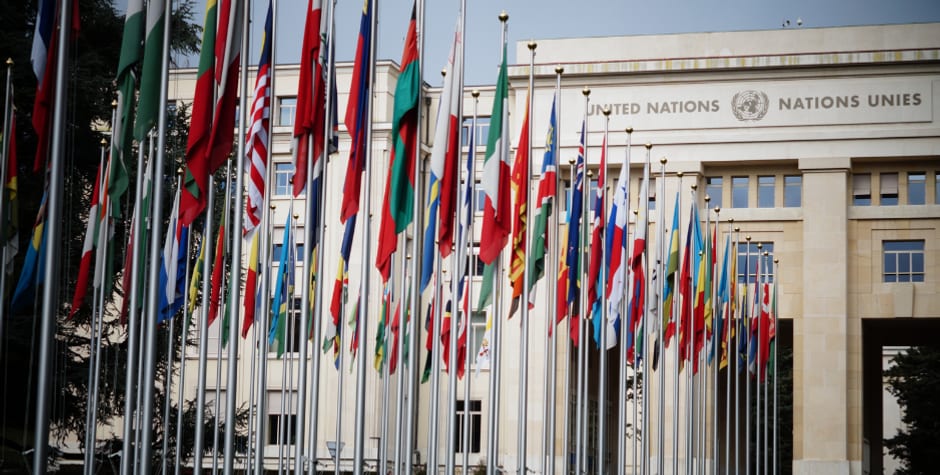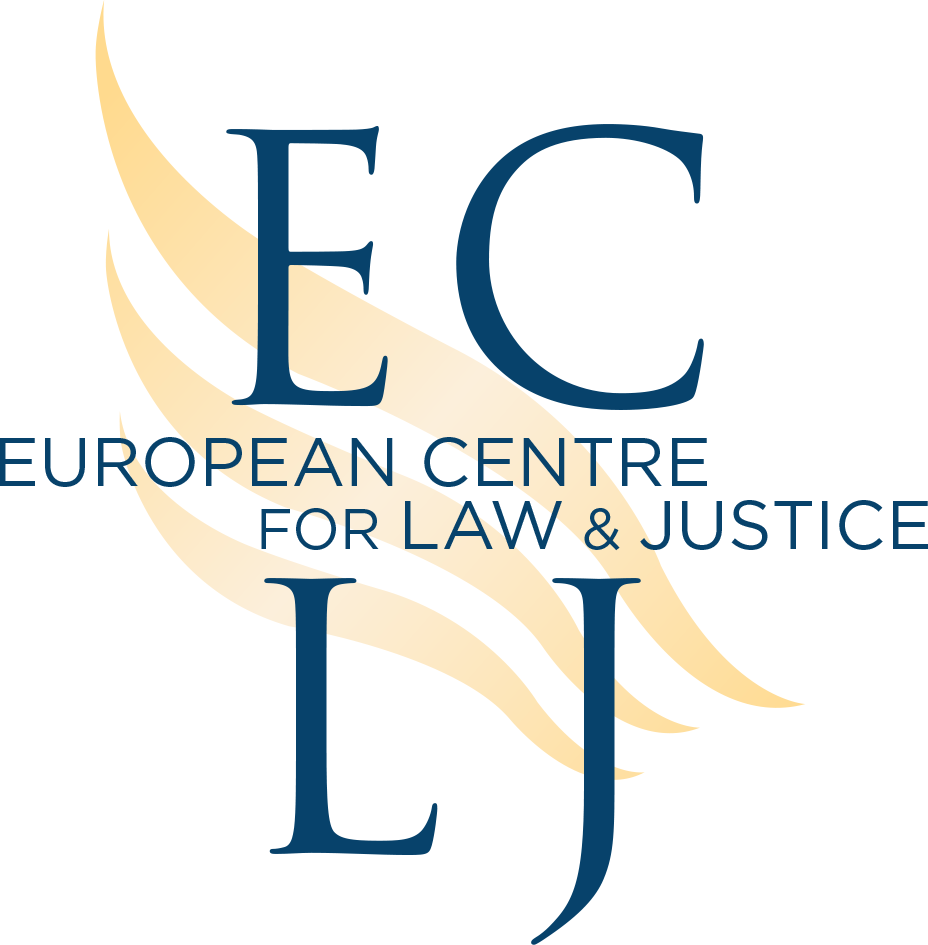

Formulating an "interpretative declaration" on the application of the right to life from before birth
The interpretation of the right to life
On several occasions, UN committees and international courts have affirmed the obligation of States to legalise abortion in certain circumstances. To do so, these bodies have adopted various approaches to depriving prenatal life of protection.
The Human Rights Committee, in its latest revision of General Comment No. 36 on the right to life in 2018, took a radical approach, removing all existing references in the original text to the unborn child, so that the question of its rights would also disappear[1].
The European Court of Human Rights states that the European Convention on Human Rights affirms that “Article 2 of the Convention [on the right to life] is silent as to the temporal limitations of the right to life”[2]. Accordingly, the Court recognises that States may, within their margin of appreciation, determine “the starting point of the right to life”[3] and therefore of its protection.
The Inter-American Court of Human Rights states that "the protection of the right to life ... is not absolute, but rather gradual and incremental according to its development."[4]
The ability of these bodies to tolerate the practice of abortion, or even to impose its legalisation, is thus based on a restrictive interpretation of the right to life, tending to exclude prenatal life, to which is generally added an extensive interpretation of the right to privacy, tending to include abortion. These interpretations diverge radically from the original intention of the drafters of the major international declarations of human rights, who did not envisage that their texts could be used to support a subjective right to abortion. This is all the more obvious as abortion was criminalised in most countries at the time. It is therefore by means of an extensive interpretation of the treaties that such judgments or decisions are imposed on States.
To oppose these abusive interpretations, a significant number of States (37 States in October 2022) signed the Geneva Consensus Declaration on the Promotion of Women's Health and the Strengthening of the Family, a copy of which was given by the United States to the Secretary General of the United Nations in a letter dated 2 December 2020.[5] Through this Declaration, States “Reaffirm that there is no international right to abortion, nor any international obligation on the part of States to finance or facilitate abortion, consistent with the long-standing international consensus that each nation has the sovereign right to implement programs and activities consistent with their laws and policies”
This statement is important. However, it is not directed at any particular international instrument, and may be ignored by judges and experts who sit on international courts and adjudicating bodies. The purpose of this note is to present a technique of international law by which this same message can be expressed in a formal way: by formally addressing it to the depositary of the international treaties in question, thereby obliging the judges and experts responsible for their application to take cognisance of it and to take it into account. This is the technique of the “interpretative declaration”.
I. Presentation of the interpretative declaration procedure
- Definition
According to the Guide to Practice on Reservations to Treaties,[6] adopted by the International Law Commission during its sixty-third session (2011), ““Interpretative declaration” means a unilateral statement, however phrased or named, made by a State or an international organization, whereby that State or that organization purports to specify or clarify the meaning or scope of a treaty or of certain of its provisions.” (Guideline 1.2)
An interpretative declaration differs from a reservation in that it does not purport to modify the legal effect of a treaty or to exclude certain provisions in their application to the author of the reservation, but to "specify" or "clarify" its meaning. As the Guide to Practice on Reservations to Treaties reminds us, “The essential point is that to interpret is not to revise”.[7]
The International Law Commission specifies that an interpretative declaration may be formulated in respect of any treaty, including those that exclude the possibility of formulating reservations, “unless the interpretative declaration is prohibited by the treaty.” (guideline 3.5). “An approval of, opposition to, or recharacterization of, an interpretative declaration shall not be subject to any conditions for permissibility.” (guideline 3.6).
- Effects
An interpretative declaration, insofar as it makes it possible to clarify the intention of a State party to a treaty, serves the proper interpretation of that treaty, without having the binding character of a reservation. This mechanism is therefore useful considering that the purpose of interpretation is to know the "meaning" and "scope" of a commitment made by a State. According to the Vienna Convention, “A treaty shall be interpreted in good faith in accordance with the ordinary meaning to be given to the terms of the treaty in their context and in the light of its object and purpose.” (art. 31.1). An interpretation may not have the effect of modifying the content of an obligation.
The International Law Commission states in guideline 4.7.1 “Clarifcation of the terms of the treaty by an interpretative declaration”
- An interpretative declaration does not modify treaty obligations. It may only specify or clarify the meaning or scope which its author attributes to a treaty or to certain provisions thereof and may, as appropriate, constitute an element to be taken into account in interpreting the treaty in accordance with the general rule of interpretation of treaties.
- In interpreting the treaty, account shall also be taken, as appropriate, of the approval of, or opposition to, the interpretative declaration by other contracting States or contracting organizations.
3. Modalities
According to the International Law Commission, “An interpretative declaration should preferably be formulated in writing” by a person “who is considered as representing a State” and addressed to the depositary of the treaty in question, who shall promptly inform the States and international organizations for which it is intended or, failing that, the contracting States.
An interpretative declaration may “be formulated at any time” (guideline 2.4.4), not merely at the time of negotiation or ratification of the treaty. It may also be withdrawn at any time.
Several States may jointly make an interpretative declaration, without affecting the unilateral character of the interpretative declaration or losing the right to withdraw it at any time.
- Possible reactions of other States to interpretative declarations
Any contracting State may express its agreement with the interpretation formulated in the declaration in question by means of an "approval" or, on the contrary, its "opposition" to the interpretative declaration by means of a unilateral declaration. Any State or international organization may also declare that it recharacterizes the interpretative declaration as a reservation. Approval, opposition and recharacterization of an interpretative declaration should “preferably be formulated in writing” and “should, to the extent possible, indicate the reasons why it is being formulated”.
An opposition would be justified when the interpretative declaration were contrary to the intention of the authors of the reference instrument, or if the text explicitly excluded the possibility of issuing such a declaration, or if the declaration were made outside the time limit, if any, prescribed in the reference instrument. Reclassification as a reservation would be justified if the declaration in question had the effect of altering the scope of the State's obligations.
II. Application to the right to life
The interpretative declaration proposed aims to clarify the often-debated issue in international law of the application, from before birth, of the right to respect for the life of every person. It therefore does not deal directly with abortion, but with a prior question that conditions its practice.
With this interpretative declaration, the States inform other State Parties and international organisations that they interpret the notion of “person” or “human being” entitled to the right to life as applying to the person from before birth.
States and international organizations could formulate the following interpretative declaration:
“State ABC interprets the protection of the right to respect for human life, guaranteed under Convention XYZ, as benefiting all persons from before birth.”
- The validity of the interpretative declaration
This declaration is not contrary to the international instruments of protection of human rights, it does not modify them, and it is in conformity with the previous position of the States.
This declaration is not contrary to international human rights instruments
International human rights instruments do not exclude, explicitly nor implicitly, the prenatal period of human life from the scope of the right to life, and even refer to it explicitly to protect it to varying degrees.
Without being exhaustive, it is possible to cite the following instruments:
- During the drafting of the Universal Declaration of Human Rights, the determination of the beginning of the right to life was debated. In the end, the text was deliberately silent on this point,[8] leaving the possibility for States to allow abortion; but in no case was it envisaged - or even considered - to affirm the existence of an obligation for states to legalise abortion.
- The American Convention on Human Rights, adopted on 22 November 1969, explicitly states that “Every person has the right to have his life respected. This right shall be protected by law and, in general, from the moment of conception. No one shall be arbitrarily deprived of his life.” (Art. 4.1).
- The Convention on the Rights of the Child, adopted on 20 November 1989, recognises, following the Declaration of the Rights of the Child, that “the child, by reason of his physical and mental immaturity, needs special safeguards and care, including appropriate legal protection, before as well as after birth” (Preamble of the CRC).
- The International Covenant on Economic, Social and Cultural Rights provides that “special protection should be accorded to mothers during a reasonable period before and after childbirth”. (Art. 10.2).
- The European Convention on Human Rights was adopted when its drafting States protected human life before birth through the criminal prohibition of abortion, and has since been consistently interpreted as not containing a right to abortion,[9] with the European Court of Human Rights holding that “it would be equally legitimate for a State to choose to consider the unborn to be such a person [under the Convention] and to aim to protect that life.”[10]
The interpretative declaration is therefore not contrary to international human rights instruments.
This interpretative declaration is not a reservation
This declaration does not have the effect of reducing the scope of the right to life, and thus of the commitment of the States parties, but merely clarifies its scope vis-à-vis its author. It does not imply any reduction in the protection of the lives of third persons, in particular pregnant women.
This declaration is furthermore consistent with the principle that an international human rights instrument confers only a minimum level of guarantee of rights and freedoms, and does not prohibit States from granting a higher level of protection in their domestic legal order.
Response to possible objections
To States that may object to this declaration, the following answer can be given:
There are no legal grounds for possible opposition to the interpretative declaration providing it is not contrary to the letter or the intention of the authors of the international human rights instrument; it is furthermore in accordance with the practice of its authors, and made in good faith.
The existence of a trend, subsequent to the adoption of a treaty, in favour of a reduction in the protection of human life tending to exclude prenatal life from its scope of application shall not compel a State to reduce the protection it grants to it. Reference to such a trend, even by a majority, can only serve to raise the overall level of protection of rights, not to reduce it.[11]
- The effects of an interpretative declaration
- On the State doing the declaration
This declaration does not change domestic law.
- On third States
Third States parties to the instruments concerned are only informed by the interpretative declaration, not bound.
- On human rights bodies
An interpretative declaration is not binding, but must be taken into account by human rights bodies and jurisdictions in order to know the extent of the State's commitment.
However, due to the specific content of the proposed interpretative declaration, non-compliance with it by international human rights bodies would have the effect of reducing the scope of the right to life guaranteed in the domestic order, which violates international law. Indeed, a judicial or quasi-judicial interpretation of the right to life excluding the prenatal period from its scope of application would be contrary to the general principle of international human rights law according to which no provision of a treaty may be “construed as limiting or derogating from any of the human rights and fundamental freedoms which may be ensured under the laws of any High Contracting Party or under any other agreement to which it is a party.”[12] This principle was articulated in several international human rights instruments, including Article 53 of the European Convention on Human Rights and Article 27 of the Convention on Human Rights and Biomedicine (Oviedo, 1997). The latter states that none of the provisions of the Convention may be interpreted “as limiting or otherwise affecting the possibility for a Party to grant a wider protection with regard to the application of biology and medicine than is stipulated in this Convention.” According to this principle, a State that prohibits the death penalty in domestic law cannot be compelled to legalise it under international law.
Furthermore, the explicit recognition of the application of the right to life to every person, from before birth, should have the effect of preventing the recognition of a “right” to abortion, as no one can have a right on the existence of a person. This interpretative declaration places abortion in the register of exception and violation of the right to life. A person who would invoke human rights to request a right to access to abortion, outside the case of danger to the life of the mother, would commit an abuse of right, because this request would aim to reduce the protection and rights enjoyed by unborn children. Such an abuse of right is prohibited for example by Article 17 of the European Convention of Human Rights, as it aims at the “destruction of any of the rights and freedoms set forth herein or at their limitation to a greater extent than is provided for in the Convention.”
[1] Observation générale sur le droit à la vie : Des mois de gestation pour aboutir à l’avortement, Compte rendu annoté de la 2e lecture des paragraphes 8 et 9 de l’Observation générale n° 36 du Comité des droits de l’homme. http://media.aclj.org/pdf/Compte-rendu-annot%C3%A9-de-l'Observation-g%C3%A9n%C3%A9rale-sur-le-droit-%C3%A0-la-vie-n%C2%B036-du-Comit%C3%A9-des-droits-de-l'homme,-ECLJ.pdf
[2] Vo v. France, [GC], No. 53924/00, 8 July 2004, (hereinafter Vo v. France) para. 75.
[3] Vo v. France, [GC], N°53924/00, 8 July 2004, paragraph 82.
[4] Inter-American Court of Human Rights, Artavia Murillo and Others v. Costa Rica. 28 November 2012. Séries C No. 257, § 264.
[5] United Nations, document A/75/626, General assembly, Seventy-fifth session, Letter dated 2 December 2020 from the Permanent Representative of the United States of America to the United Nations addressed to the Secretary-General.
[6] https://legal.un.org/ilc/reports/2011/english/addendum.pdf
[7] ICJ, Advisory Opinion of 18 July 1950, Interpretation of Peace Treaties with Bulgaria, Hungary and Romania, I.C.J. Reports 1950, p. 229, or Judgment of 27 August 1952, Rights of United States Nationals in Morocco, I.C.J. Reports 1952, p. 196.
[8] Travaux préparatoires, E/CN.6/SR.28, p. 1355.
[9] See in particular G. Puppinck, "Abortion and the European Court of Human Rights", Law and Prevention of Abortion in Europe, Sallux, 2018.
[10] A. B. C., v. Ireland, GC, no. 25579/05, 16 Dec. 2010, § 222, upholding Vo v. France, GC, no. 53924/00, 8 July 2004.
[11] Bayev and others v. Russia, no. 67667/09, 20 June 2017, § 70.
[12] European Convention on Human Rights, Art. 53, “Nothing in this Convention shall be construed as limiting or derogating from any of the human rights and fundamental freedoms which may be ensured under the laws of any High Contracting Party or under any other agreement to which it is a party.”












